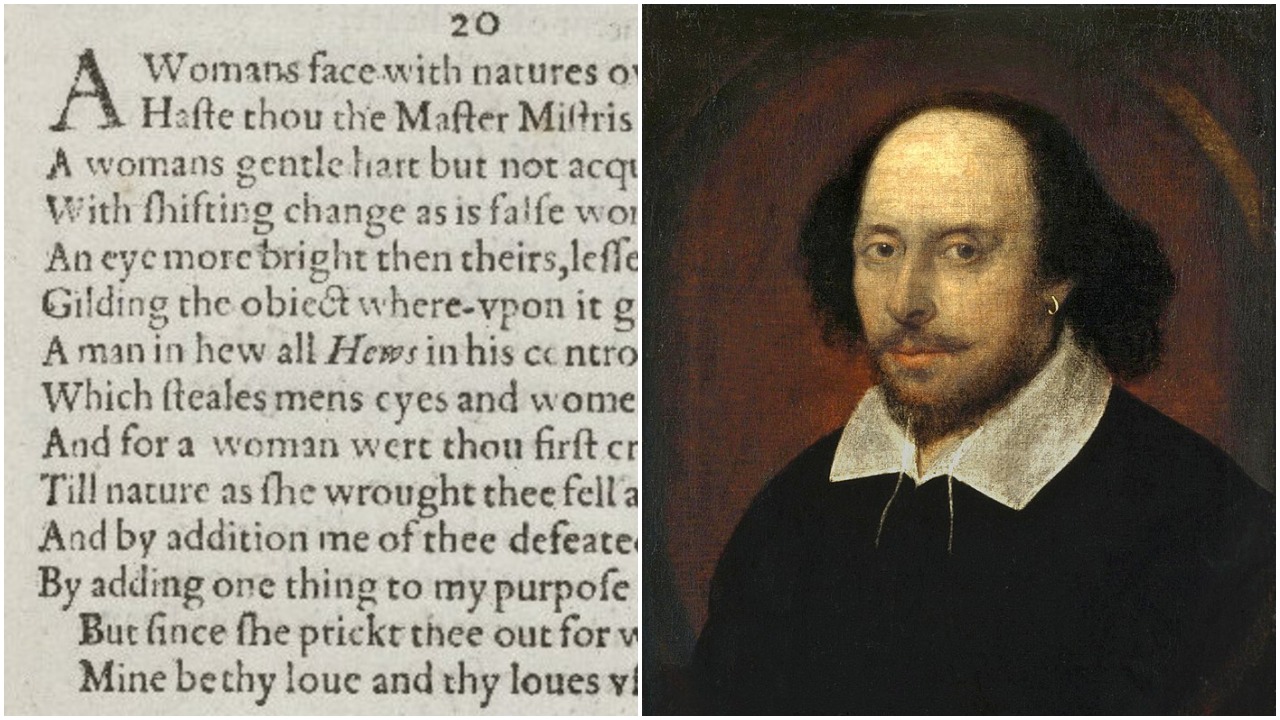The Queer Narrative of Shakespeare’s Sonnets


If you, like all of us, have been craving something soothing and wonderful in the time of coronavirus isolation, you might have stumbled (via this site even!) on Sir Patrick Stewart’s methodical read-through of all of Shakespeare’s sonnets. It’s perfection and it’s wonderful to hear these works read by someone who so deeply understands that language. And if you’ve been following along, you may have seen the introduction to sonnet 18, which is one of the most famous of Shakespeare’s poems and also the start of a sequence of poems that seem to rest on the author’s romantic and perhaps sexual attraction to another man.
The theory that Shakespeare was queer is not a new one at all. Scholars for many years have reckoned with (and rationalized) the many sonnets addressed to a male beloved (the Fair Youth), or a “sweet boy” as in Sonnet 108:
Nothing, sweet boy; but yet like prayers divine
I must each day say o’er the very same,
Counting no old thing old, thou mine, I thine,
Even as when first I hallowed thy fair name.
A Stewart summarizes above, there is a whole series of sonnets dedicated to this Fair Youth, lamenting the poet’s love for him, celebrating him and even, as in sonnet 20 (which Stewart made the decision to skip because of how it talks about women) lamenting the youth’s male sex. The pretty explicit (for this era) homosexual romance of the sonnets wasn’t some convention of Elizabethan poetry either, it was pretty unique and thus, pretty meaningful. And it can’t be written off as a fictitious conceit or stylization.
The sequence of the sonnets tells a complex story, one where the poet is caught between his “dark lady” and the fair youth, who might even be having an affair themselves. I love that, and the fact that the sonnets are more difficult to get into and therefore their queer narrative is less well-known than say, the plot of Romeo and Juliet, makes the queer subtext feel like discovering a magical secret.
Examining the sonnets and their queer elements is rewarding, but also challenging. The language and metaphor of the sonnets can often be hard to penetrate, compared to other works. And as we noted, they’re not all queer, or all happy. And does the presence of all this queerness in the sonnets (and in other works of Shakespeare) mean we can call him a gay icon?
Maybe not. The dark lady, along with the fact that we know Shakespeare was married and had children make the idea of claiming Shakespeare as “gay” himself, tricky and also a big potential case of bisexual erasure. But even calling him bi would not entirely encompass things, simply because our modern ideas of sexual orientation don’t apply. But we should certainly read Shakespeare as a queer author, and feel justified in viewing any of his works and characters through a queer lens.
(images: Wikimedia Commons)
Want more stories like this? Become a subscriber and support the site!
—The Mary Sue has a strict comment policy that forbids, but is not limited to, personal insults toward anyone, hate speech, and trolling.—
Have a tip we should know? [email protected]
